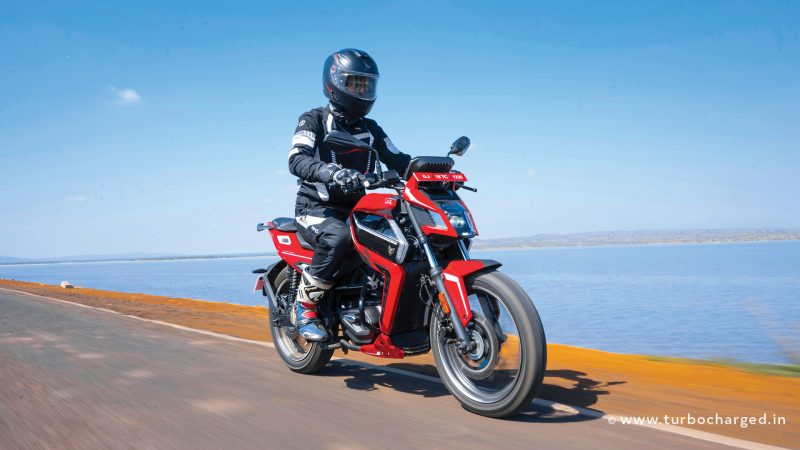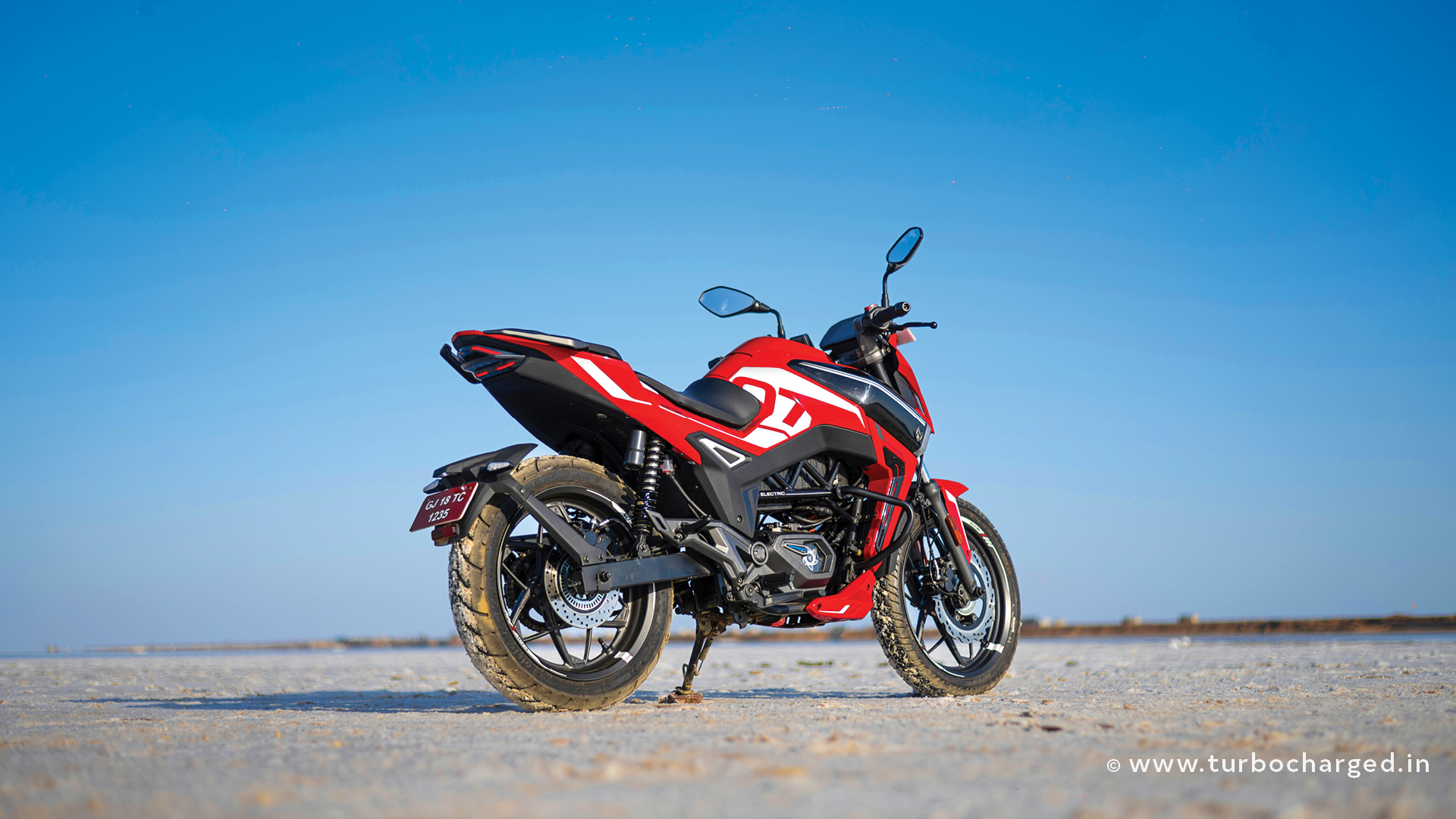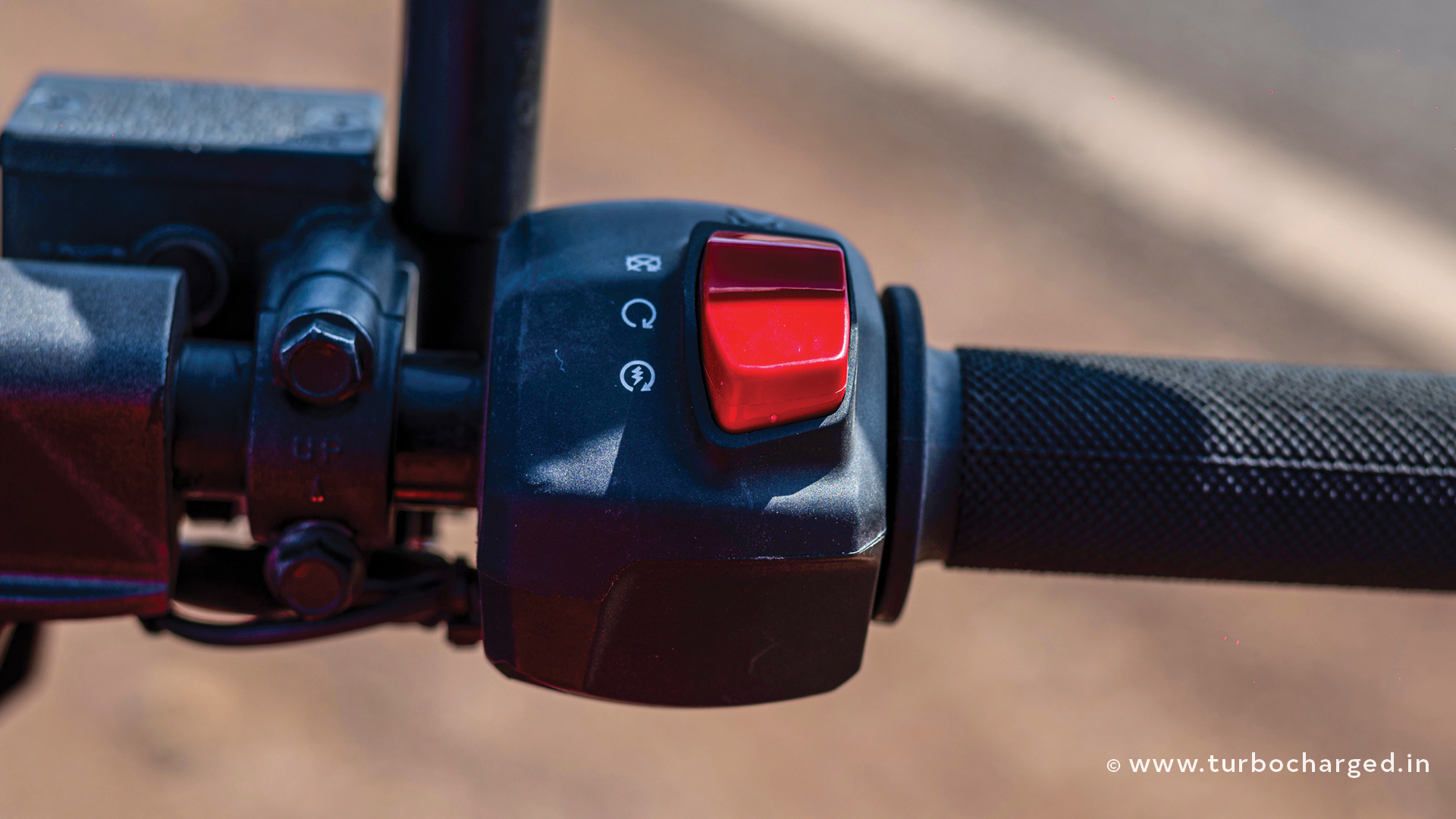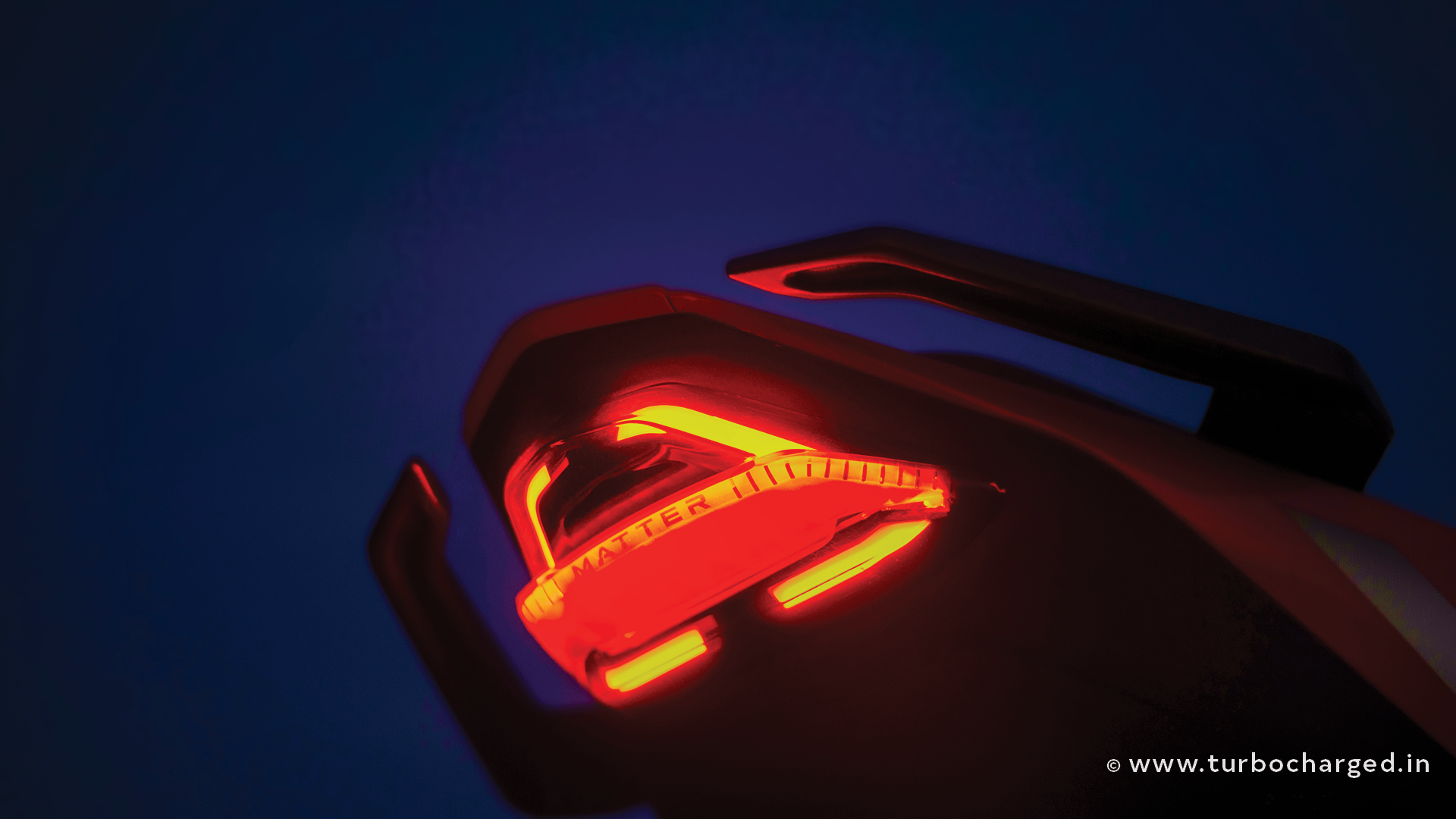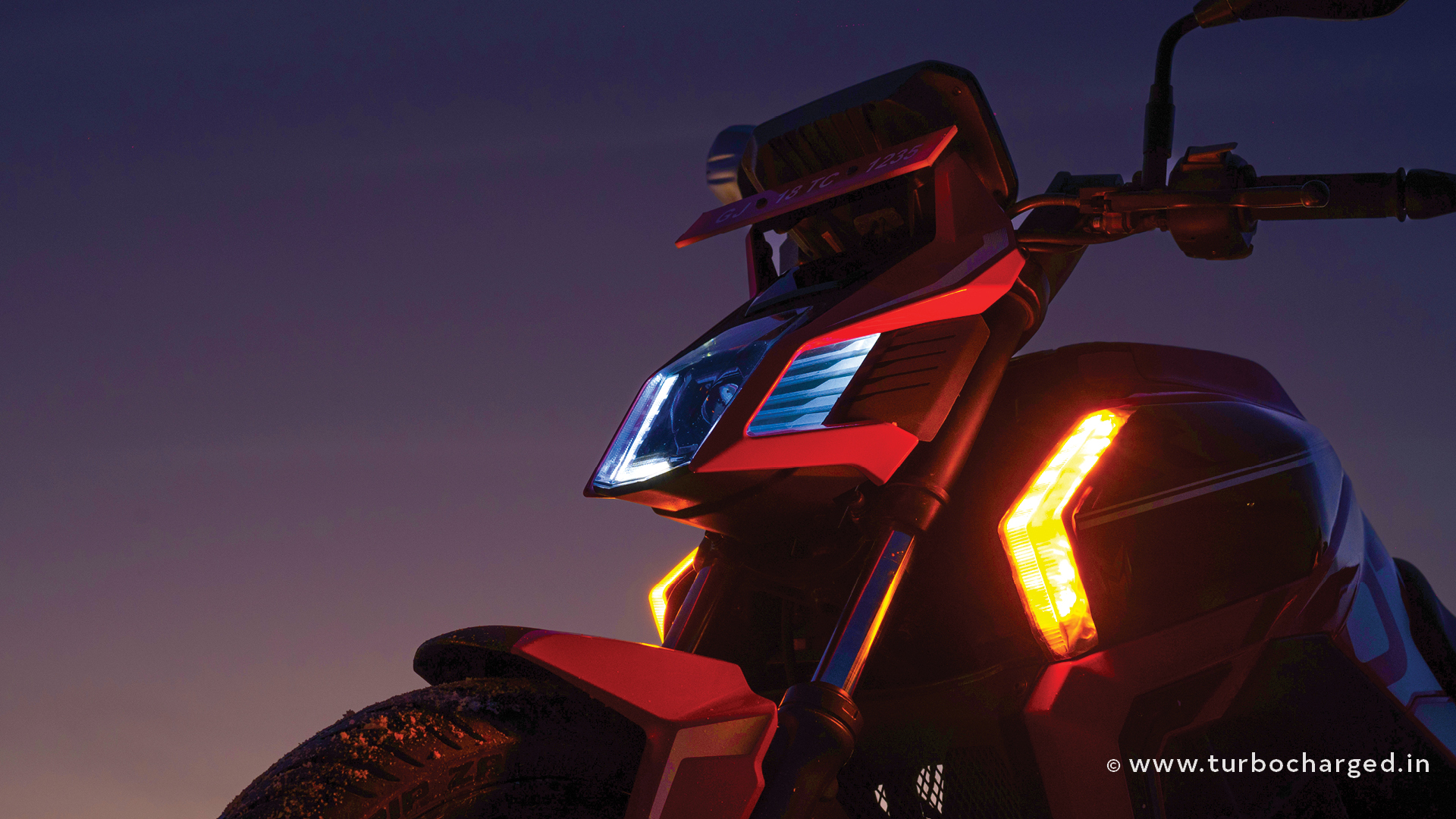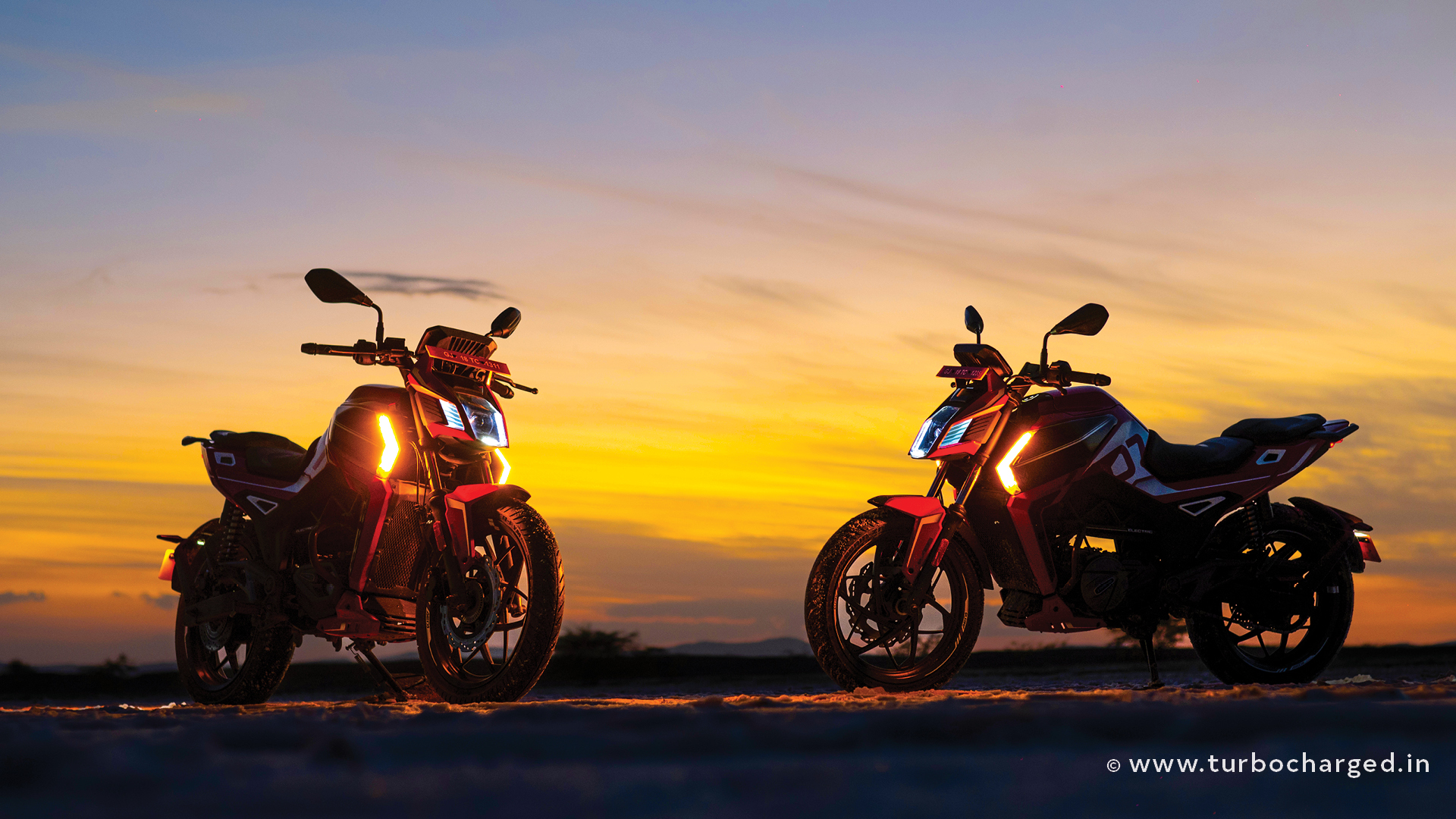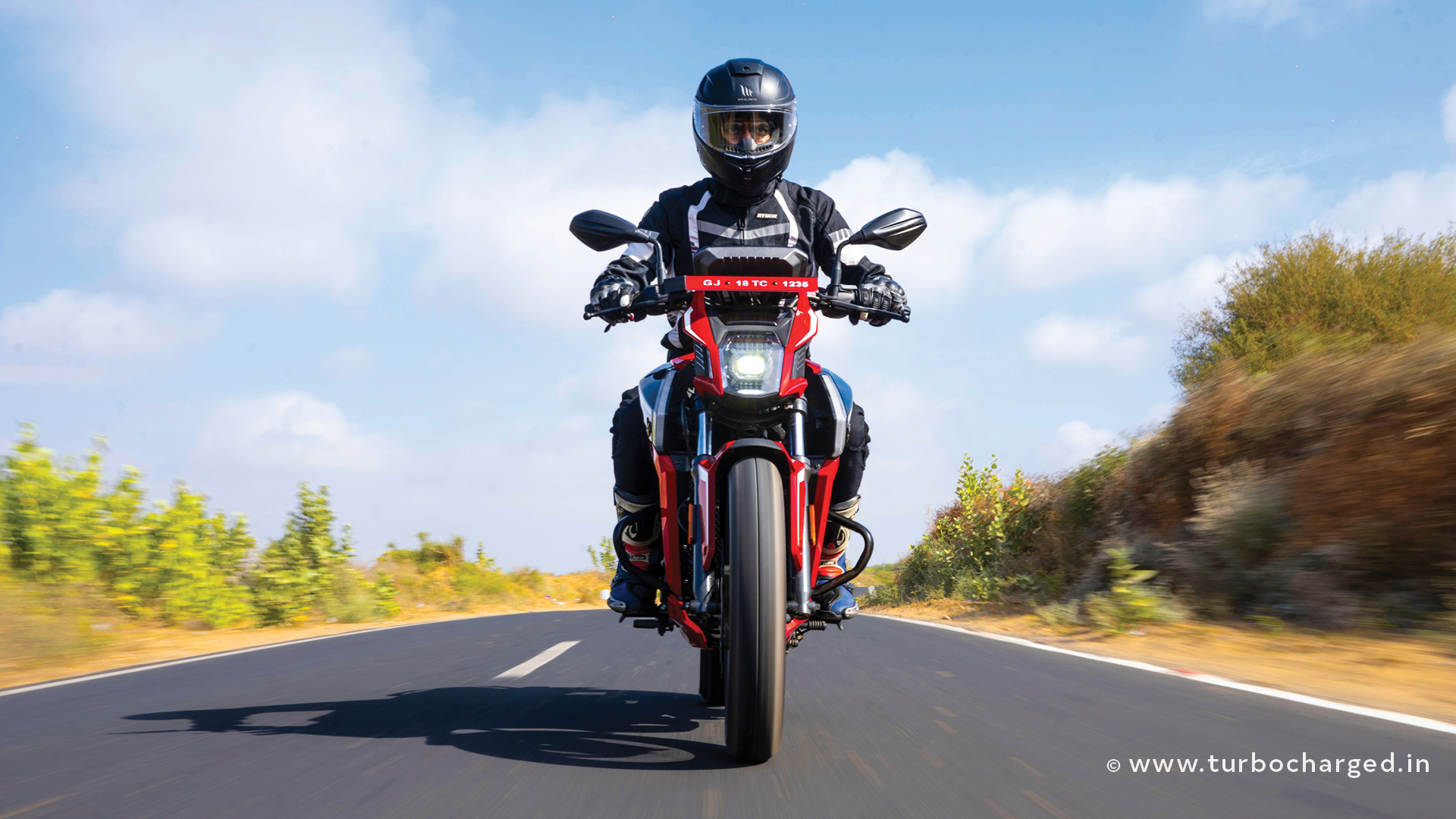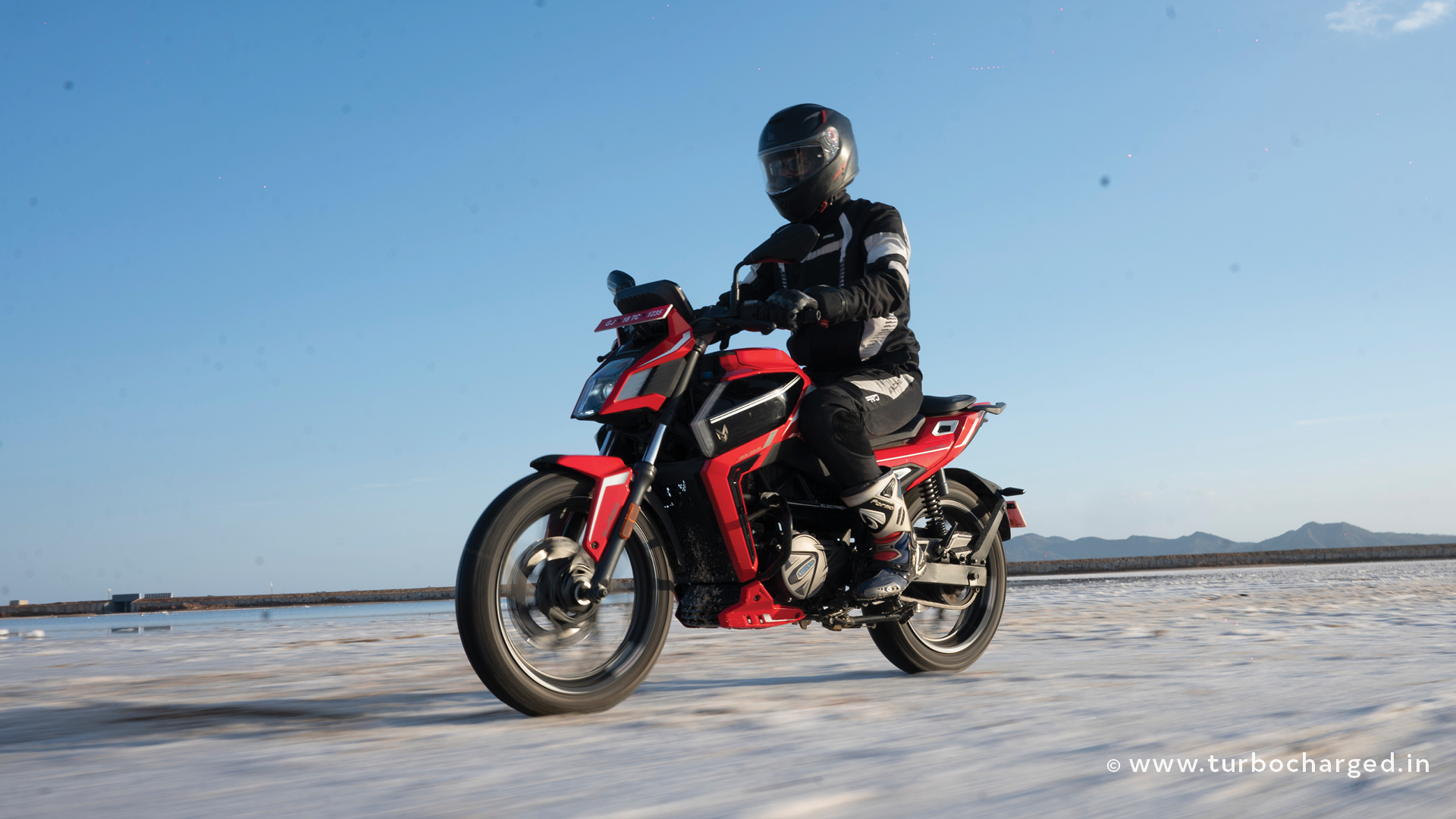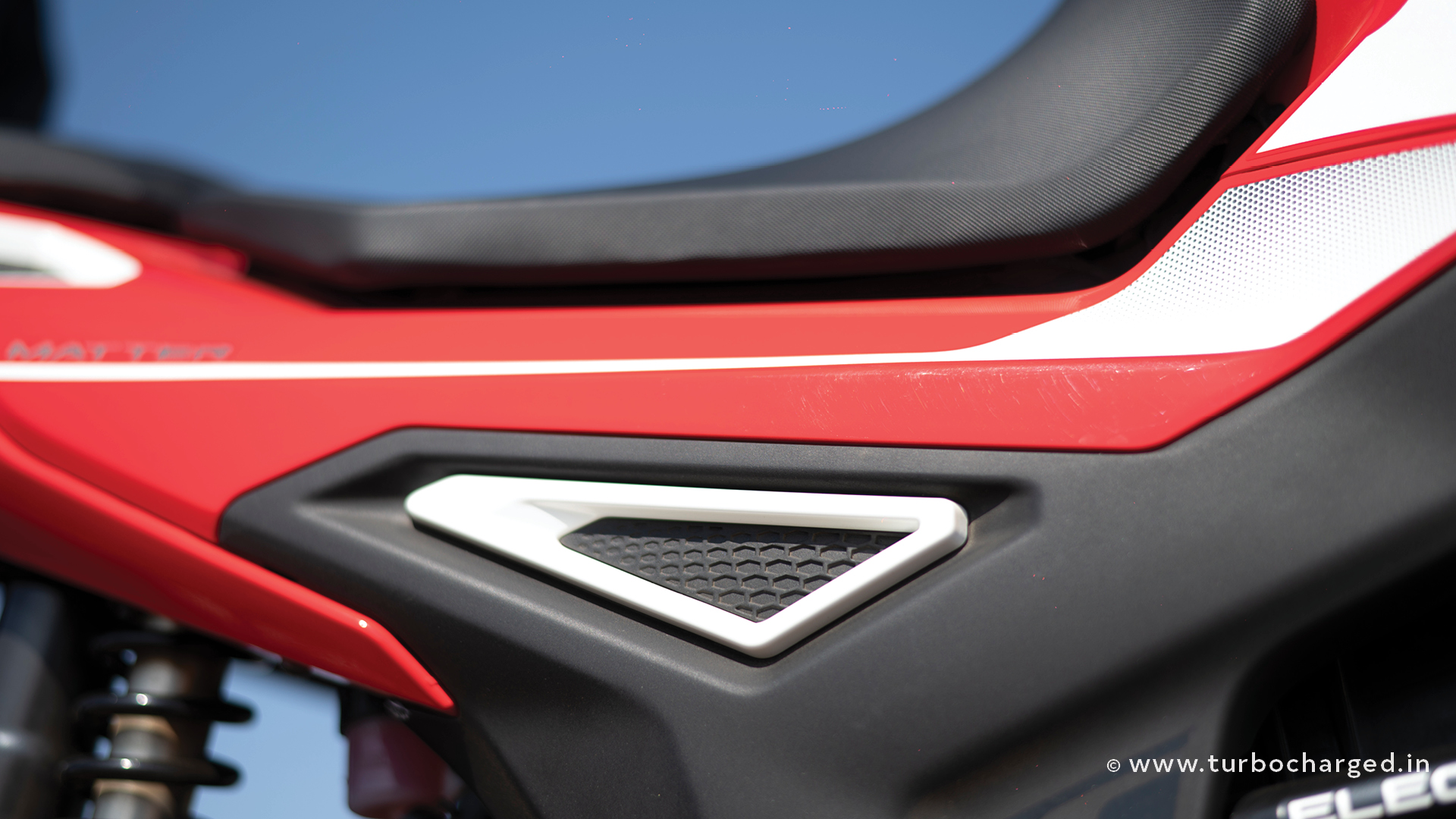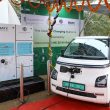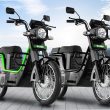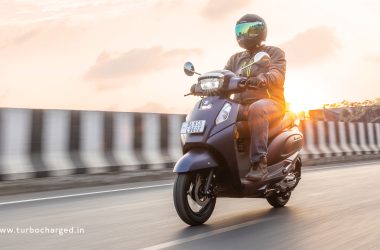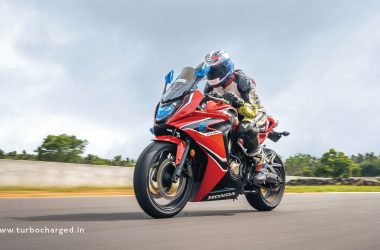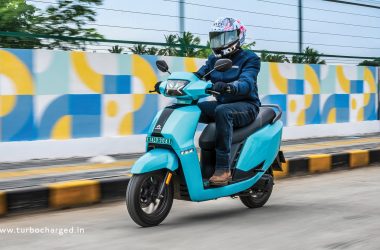Photography: Siddhant Gadekar
When given a choice, people tend to prefer motorcycles over scooters for the more engaging feel they offer while riding. That is not exactly the case in the EV space, since most electric motorcycles offer the same controls as scooters, and hence feel more like scooters to ride and don’t offer the engaging feel of an ICE motorcycle. So how do you make electric motorcycles more appealing? One way would be to pack it with blistering performance like Ultraviolette does and the other would be to make it more engaging to ride by adding a gearbox to the mix. Matter, an Ahmedabad based company, has decided to take the latter route. The result is India’s first geared electric motorcycle called the Aera 5000! We flew to the Rann of Kutch to experience how it feels to ride the higher spec Aera 5000+.
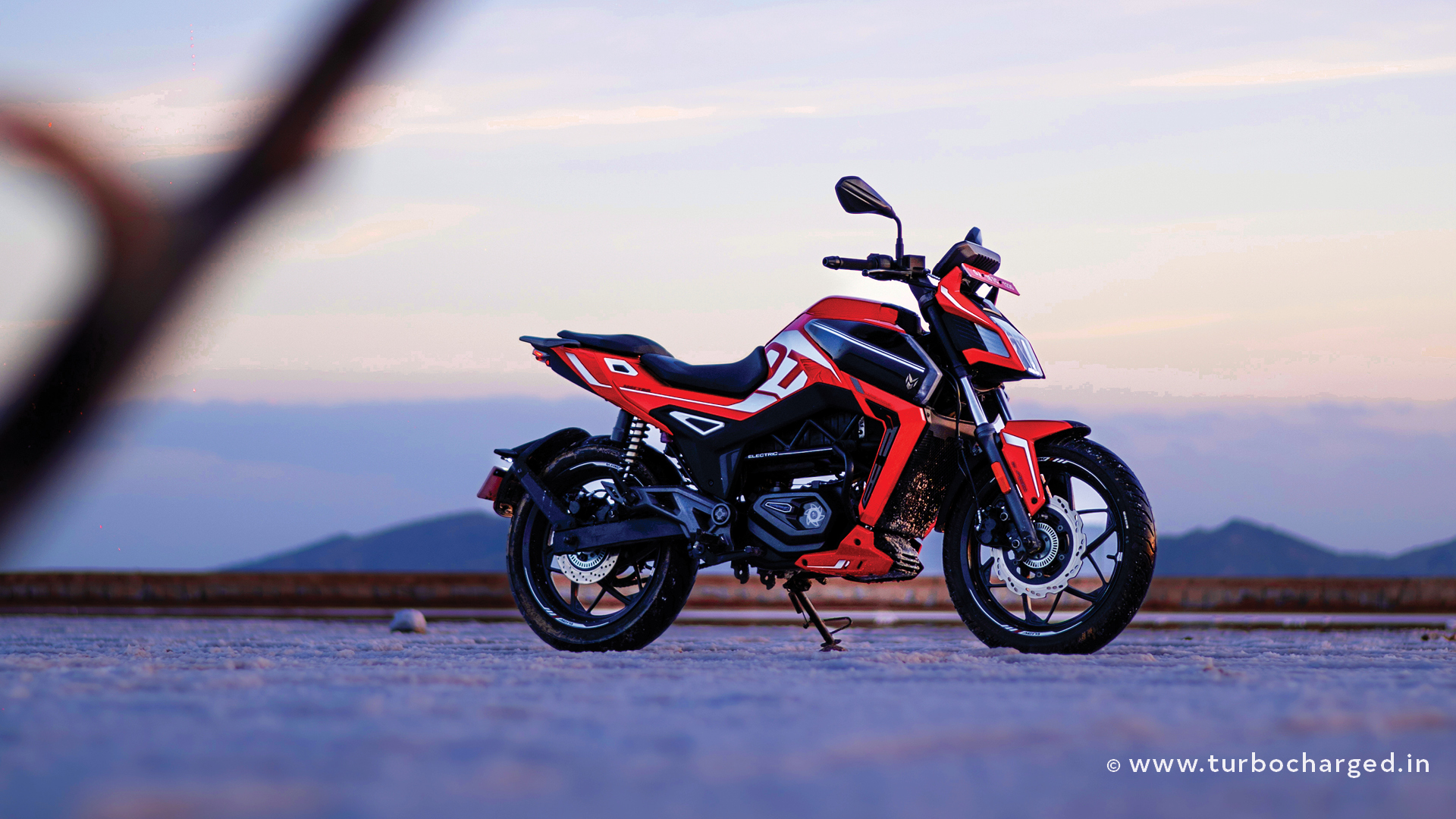
At first glance, the Aera comes across as a futuristic motorcycle. Upfront you get a LED projector headlamp with the turn indicators sitting flush within the tank shrouds. The placement of the electric motor and 4-speed gearbox combo is similar to where you’d find the engine and gearbox on an ICE motorcycle. The fidget spinner styled gear placed inside is a cosmetic touch which rotates at the same speed as the electric motor. Above that you get an integrated module that houses the battery pack, Battery Management System (BMS) and the DriveTrain Unit. The rear end looks clean with the LED tail lamp placed below the pillion seat and the tyre hugger houses the sequential turn indicators. The overall design exhibits a sporty and modern character.
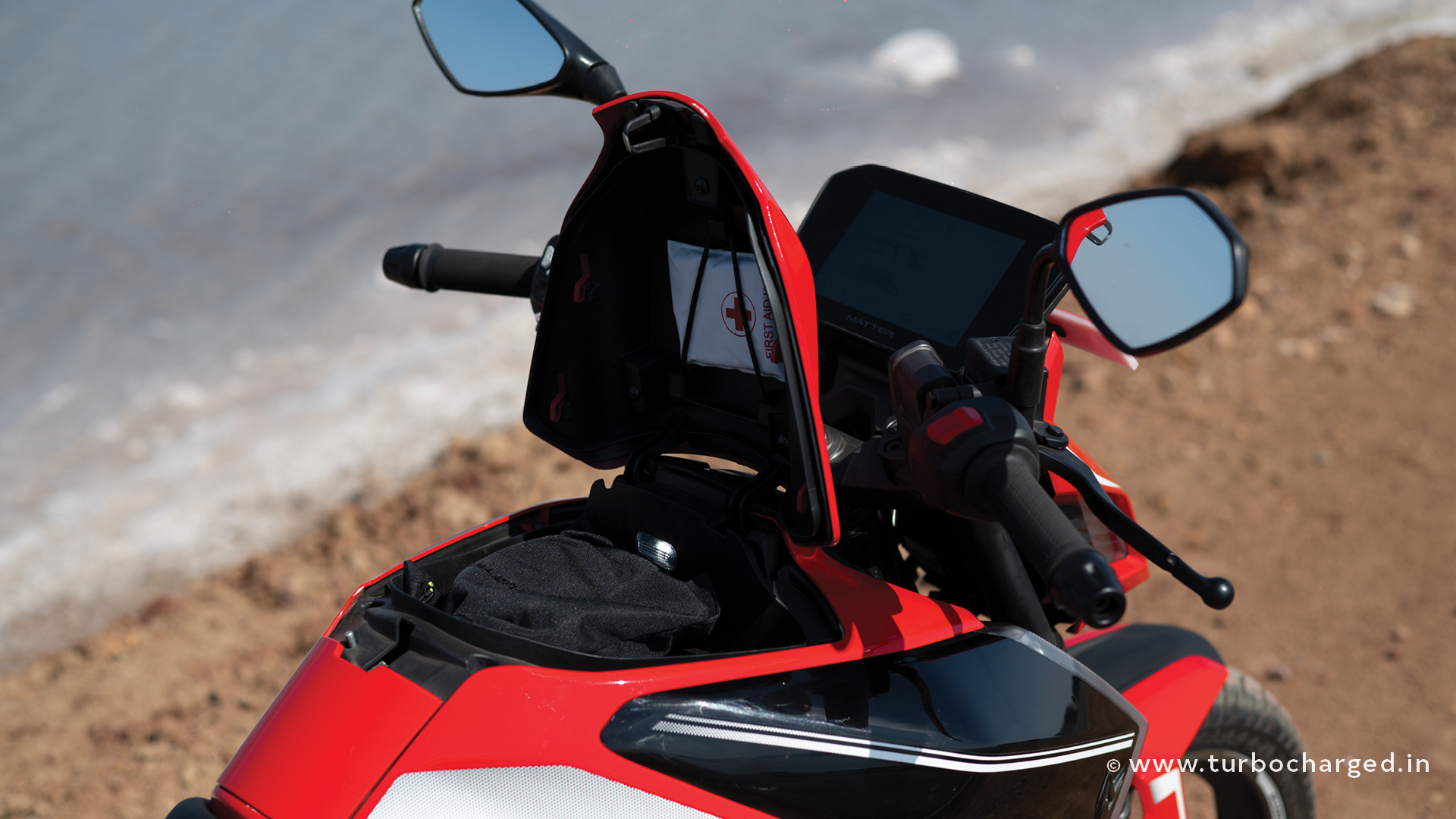
The fuel tank area has been utilised to house the charging port and a small 3.5-litre storage space with a USB-A port, big enough to store the portable charger. Unfortunately, the charging port lid doesn’t lock and feels flimsy. The rest of the fit and finish levels on our pre-production units were quite impressive, though.
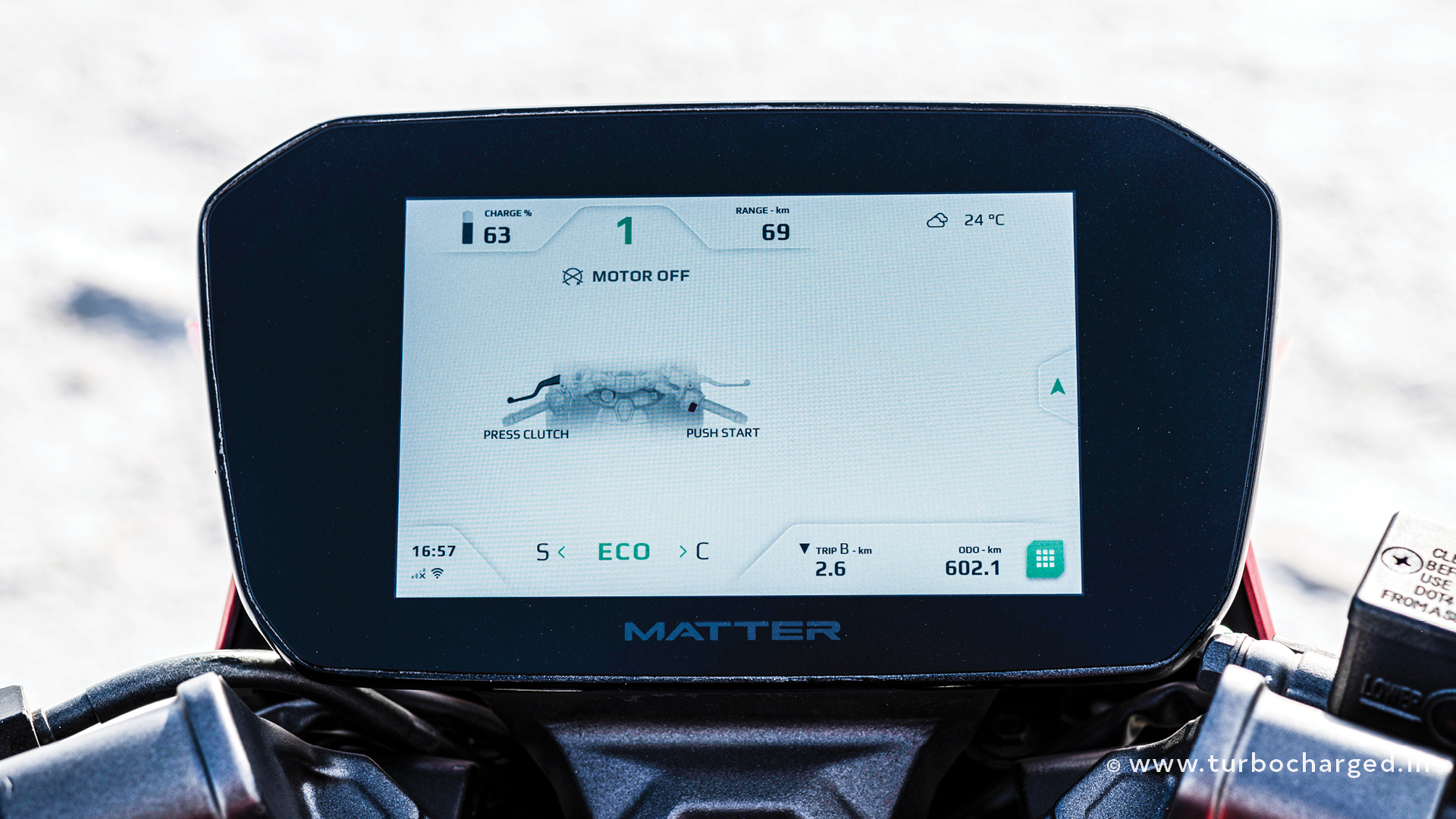
One of the highlights of the Matter Aera is its 7-inch LCD touchscreen. It is one of the most comprehensive systems we have seen on an electric two-wheeler. The home screen displays the gear and mode you are riding in along with the speed and tachometer. On the other side you have the in-built navigation powered by MapmyIndia. The navigation can also be expanded across the screen if required, with a minimised view of the speed and gear indicator. Hit the menu key and you’ll be greeted with a host of settings to play with. The display can also be operated via the switchgear on the left handlebar but currently, there’s no option to switch back and forth between the two display views, when on the move. The display itself is quite legible and responsive even when operated with riding gloves.
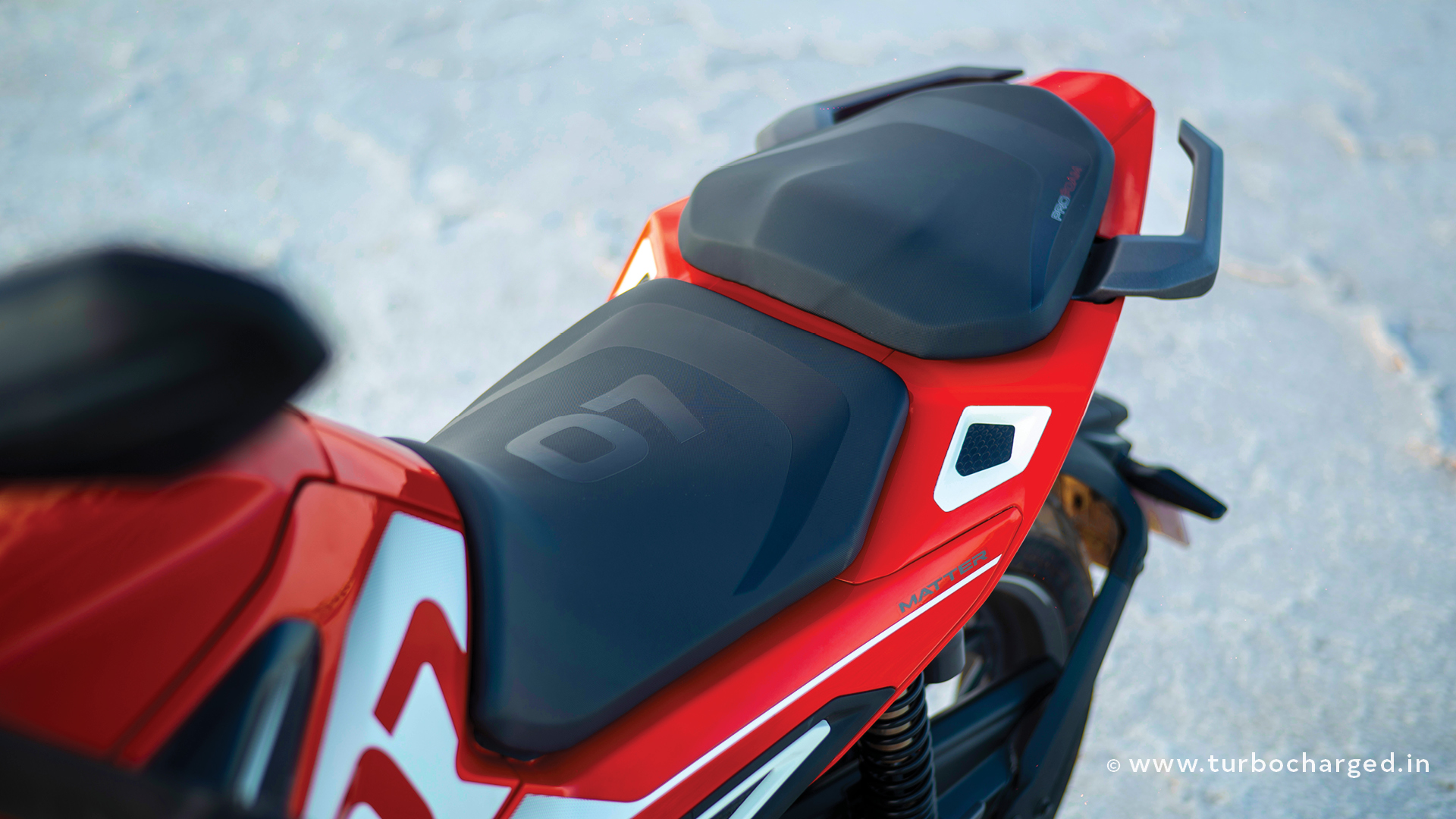
Things are again impressive in the ergonomics department. You get a wide seating area for both the rider and pillion, and the seat cushioning isn’t too soft or hard. The clip on handlebars are placed at a comfortable height and foot peg positioning is rear set. Overall you sit in a slightly committed posture but it is comfortable and I didn’t feel any aches after spending a few hours in the saddle.
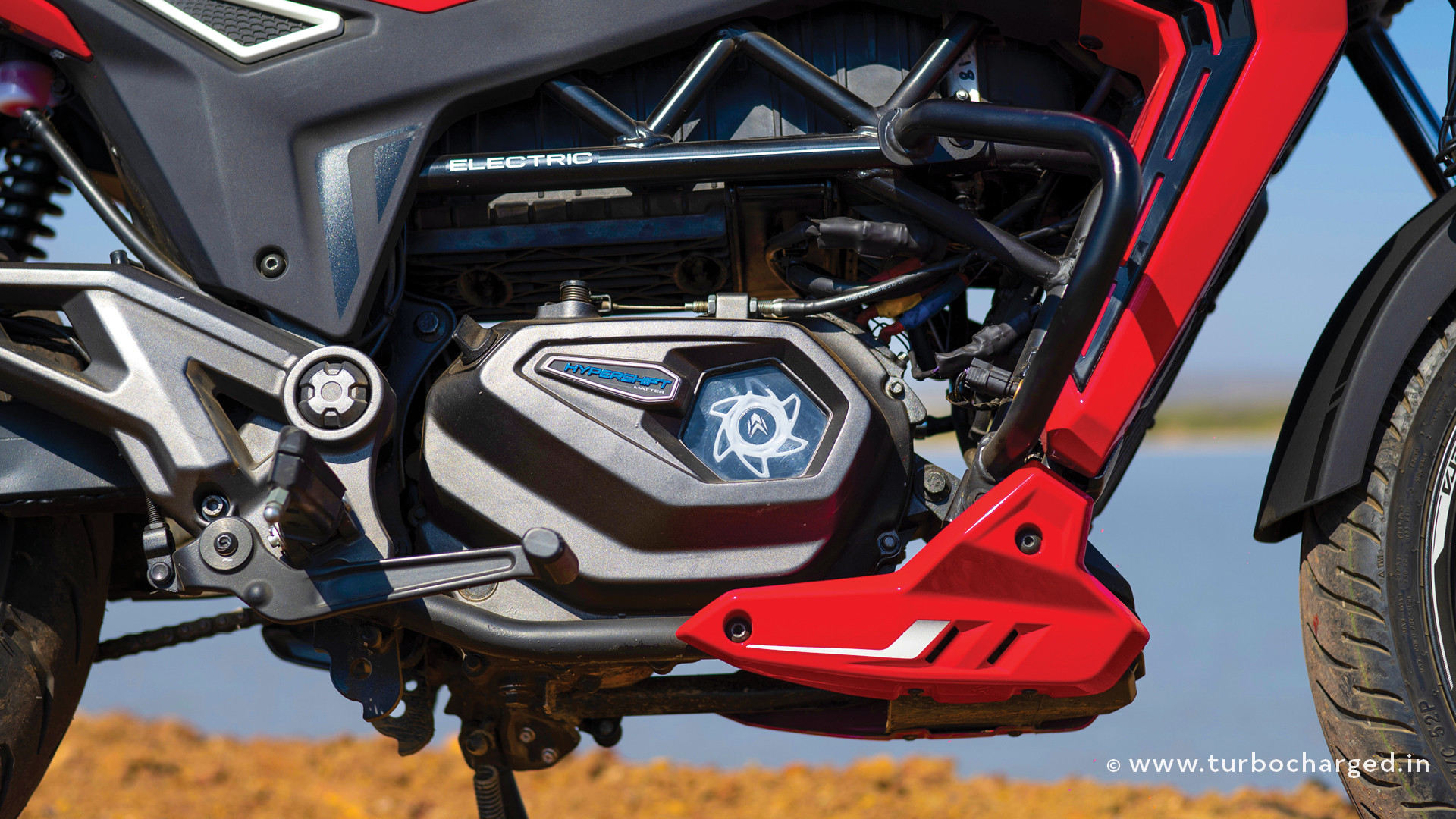
Coming to the important part – the powertrain. It gets a 10.5kW PMSM motor which is coupled with a 4-speed mechanical gearbox. Unlike most electric motorcycles which use a belt-driven system, the Aera uses a metal chain to transfer the power to the rear wheel. The controls to operate the gearbox are the same as your conventional motorcycle (one down and four up). It is a bit hard to predict the biting point of the clutch at first as an EV is devoid of any kind of sound or vibrations. That being said, it isn’t an issue here because unlike an ICE motorcycle, the Aera won’t stall if you completely release the clutch without any throttle input. You need to be mindful of not accidentally twisting the throttle when you leave the motorcycle in gear, though.
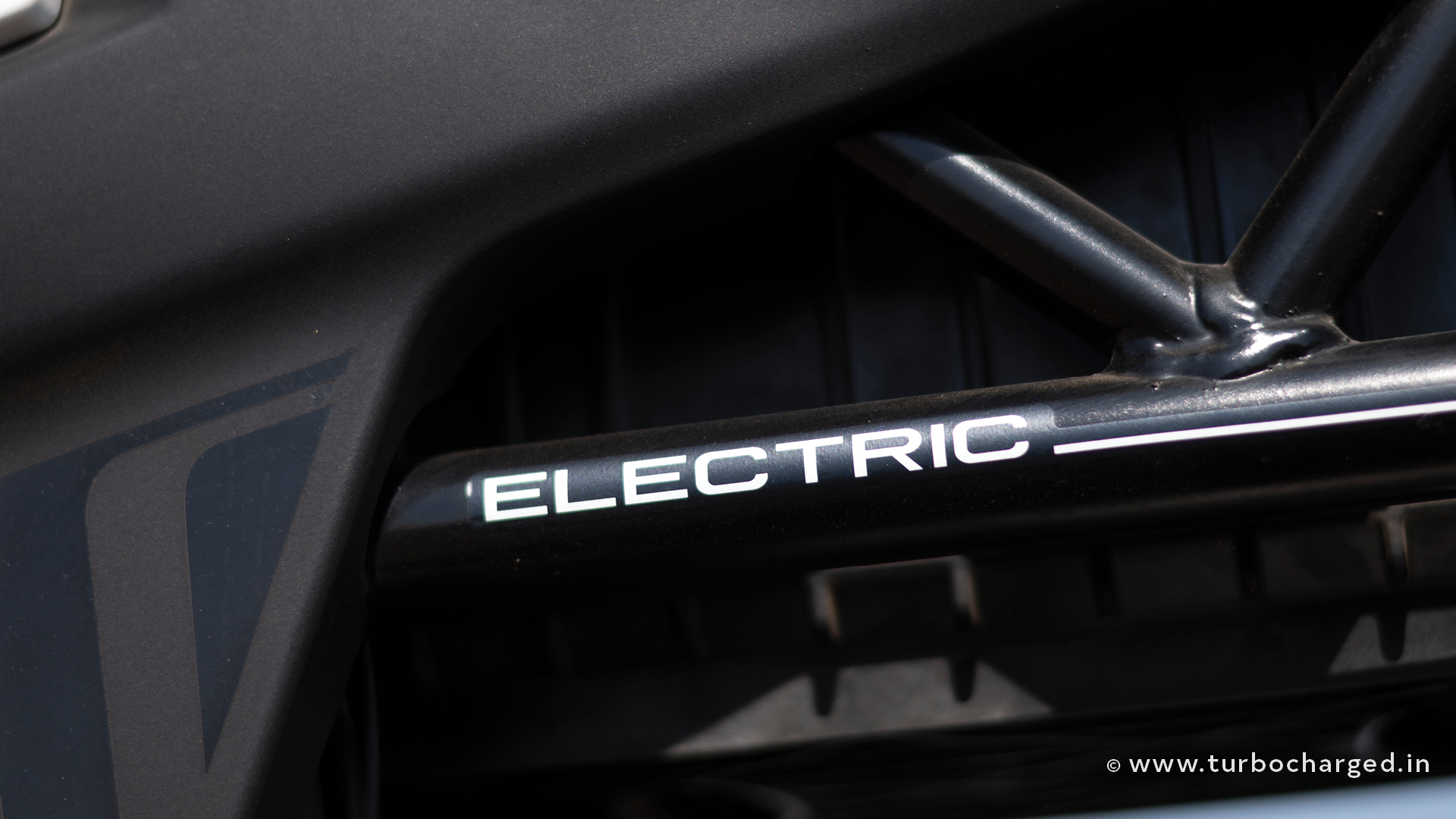
Like a conventional motorcycle, the first gear on the Aera is the torquiest and it is quick to launch off the line until you hit the redline at around 5,500rpm. At this point you feel like you have hit a wall, similar to when you redline an ICE motorcycle, only here there are no vibrations. The overall process takes some getting used to but once comfortable, the Aera does feel very familiar to riding a conventional motorcycle. You also have three ride modes on offer – Eco, City and Sport. The Eco mode is good enough for low speed city traffic, but the City mode is the one to use on your daily commute. The power is on par with conventional 150cc motorcycles, but the Aera feels quicker, especially in the Sport mode which offers brisk acceleration. We even managed to hit an odo-indicated top speed of 113kmph, 8kmph more than the claimed figure of 105kmph.
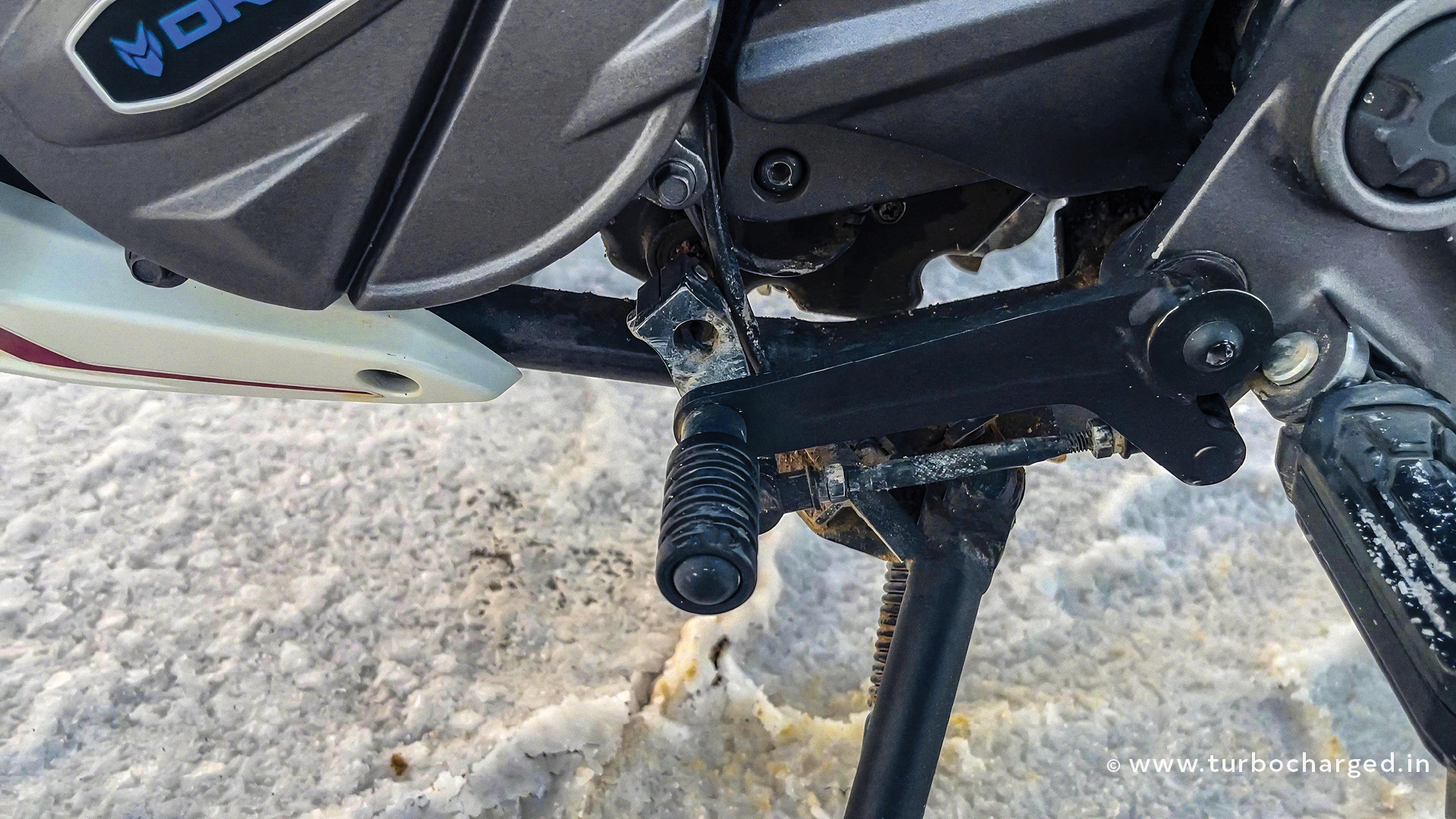
Thanks to the torque from an electric motor being available right from the get go, the Aera is probably the most tractable geared motorcycle out there as you can start riding from a standstill even in fourth gear. On the flip side, the units we were riding were programmed to go into Fault Mode if we made rapid downshifts when the rpm was above the 3,500 mark, which affected engine braking (more on this later). Matter says it will be working on fixing this issue on the production models.
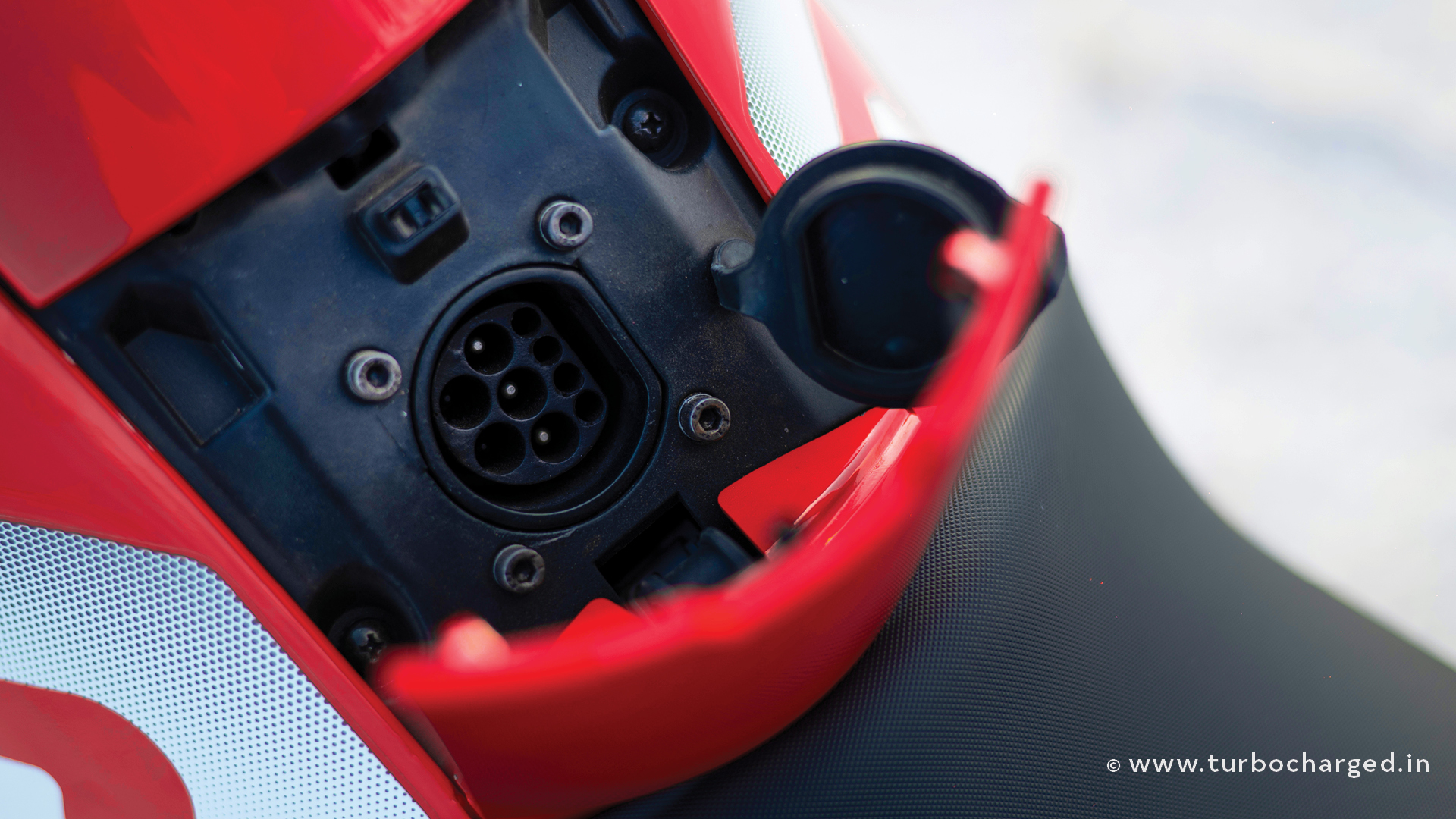
The Aera is powered by a 5kWh battery pack that offers a claimed range of 125km (according to internal tests) on a single charge. At the start of our ride, the screen displayed a range of 114km (in Eco mode) at 100 percent charge. We rode the motorcycle for around 50km (in Sports mode for 75 percent of the time) on the B-roads that had minimal elevation changes and the charge came down to 41 percent charge with 43km of range (in Eco mode). Charging it to 100 percent with a normal socket would take around 5 hours but fast charging will be offered in the future, which can top up the battery from 0-80 percent in 1.5 hours. The active liquid cooling for the motor and battery pack on the Aera is also quite effective and we didn’t face any heating or performance throttling issues throughout the day, even in the hot riding conditions of Kutch.
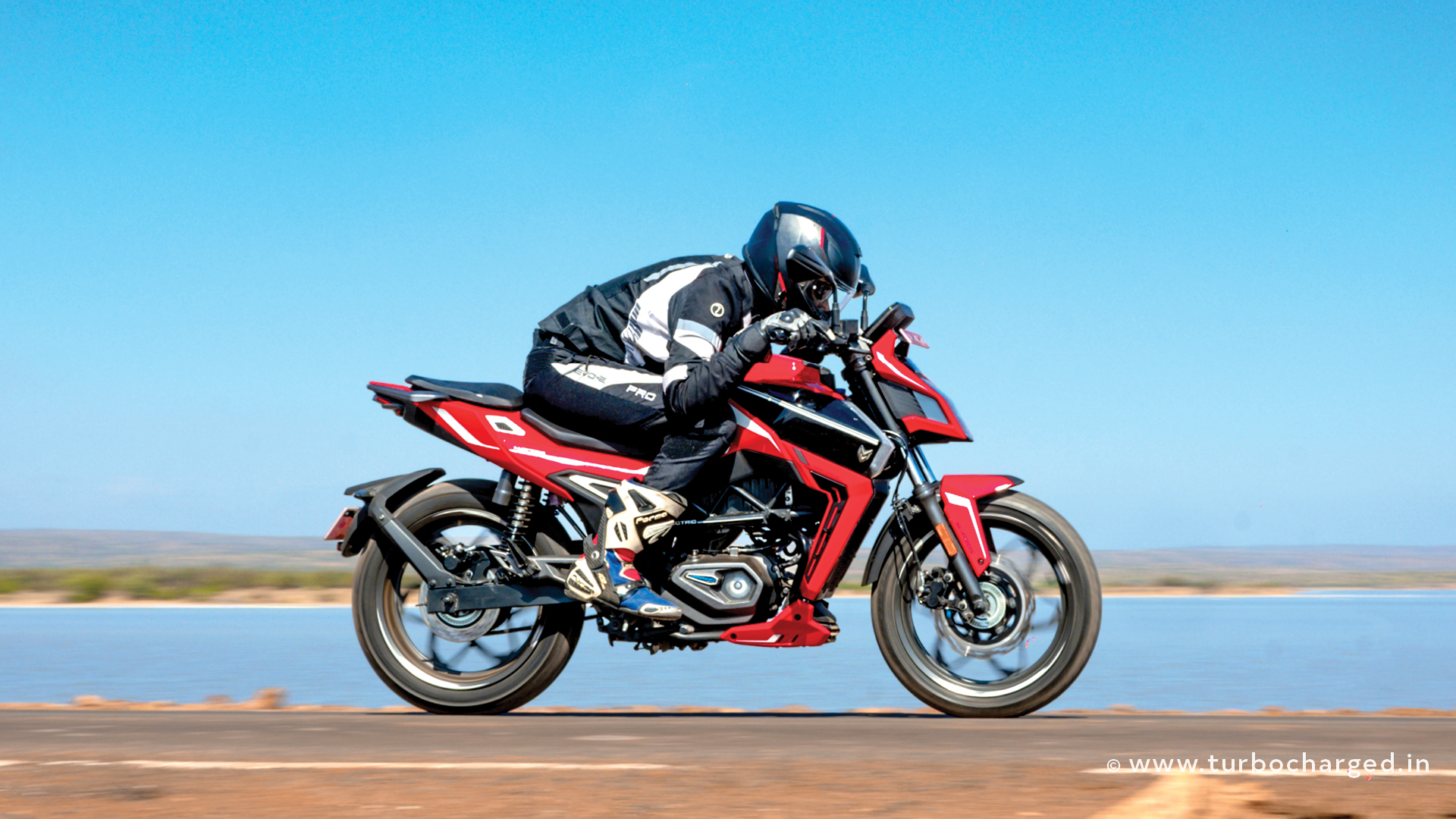
The Aera sits on a dual-cradle frame, suspended on telescopic forks upfront and conventional twin shock absorbers at the rear. It is also relatively light at 169kg which makes it easy to ride. That being said, the high centre of gravity compared to similar 150-180cc motorcycles, means that it does feel a bit top-heavy. The ride quality is quite impressive though, and you can cruise at triple digit speeds all day long, if the range permits.
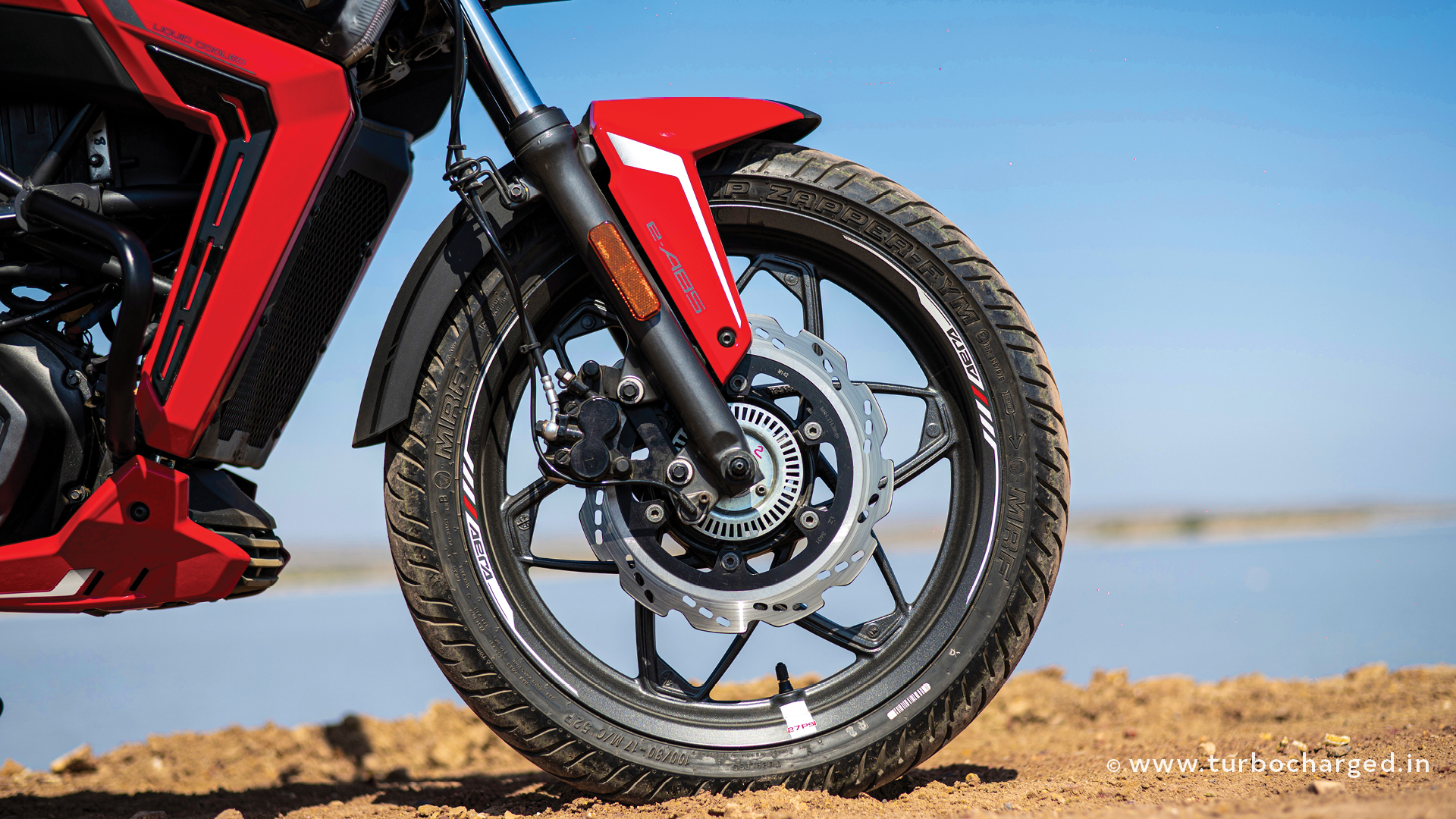
The braking hardware includes 270mm and 220mm disc at front and rear, respectively, and offers decent braking prowess. In the case of EVs you also have regenerative braking to help you slow down and sort of mimic engine braking on downshifts on conventional ICE vehicles. On the Aera, though, the regen is almost negligible and you have to solely rely on the brakes to slow down. You only get single-channel ABS and we feel dual-channel ABS should have been present given the performance on offer.
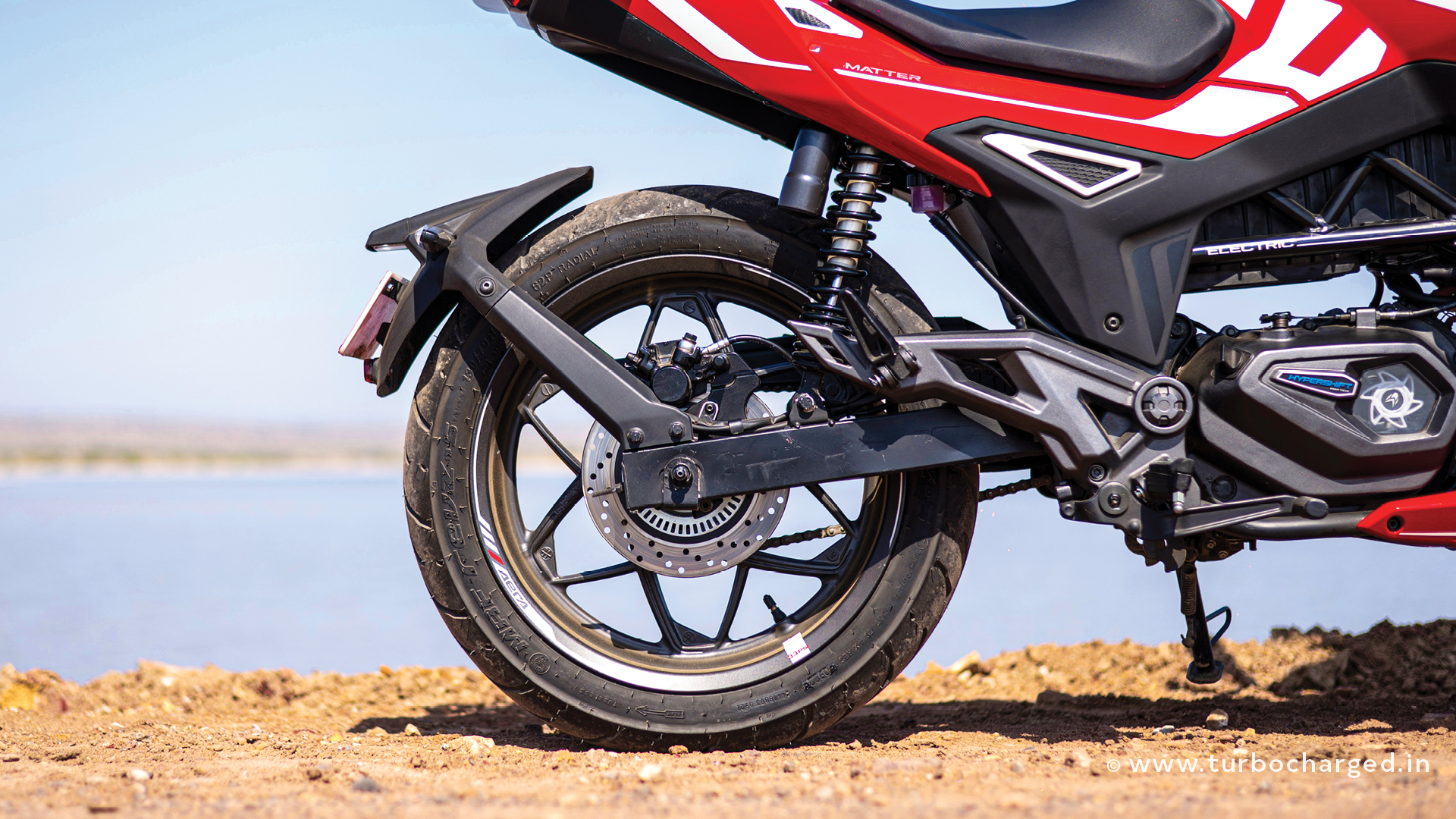
The Aera is priced at Rs 1.74 lakh for the 5000 variant and Rs 1.84 lakh for the 5000+. It covers most of the bases expected on a commuter including design, features, build and comfort. The performance is impressive and the addition of a gearbox does offer the engagement we wish for on a motorcycle. There are a few downsides, though, the primary one being the lack of enough regenerative braking. Matter also needs to look at adding a little play or friction in the throttle, which is too responsive at the moment. As things stand, the Matter Aera is a very well-made electric motorcycle with a unique touch and certainly worth your attention if you are looking for your first electric motorcycle.





